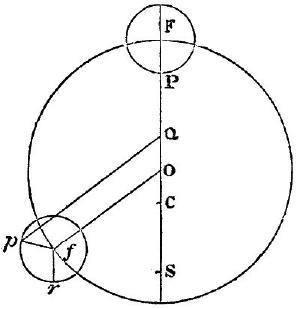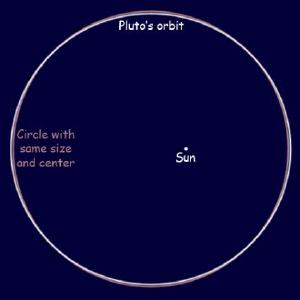Blog
Against the Grain
24 March 2014
 Tunc Tezel
Tunc TezelThere are times when Mars will sometimes reverse its direction of motion in the sky, a phenomenon known as retrograde motion. While Mars has the biggest example of retrograde motion, other planets also undergo retrograde motion. Such a strange variation in motion posed quite a challenge for early astronomers looking for a simple geometric model of the Universe.
In medieval Europe, the cosmology of Aristotle dominated. Aristotle’s view of the Universe had the Earth at its center, with the Sun, Moon and planets moving around it in circular orbits. To medieval astronomers this model clearly didn’t work, but the idea of heavenly objects moving in circular motion was so strongly engrained that new models tended to focus on modifying circular motions.
 J E D Bethune
J E D BethuneOne common way to get retrograde motion was to offset the circular orbit from Earth, then place the planet on a smaller circular path (known as an epicycle) about the main circle. This approach was introduced by Ptolemy in the second century, and held sway for more than a thousand years. But as more accurate observations of planetary motion were made, it became clear that one epicycle wasn’t enough. To really be accurate one needed epicycles upon epicycles, or other offsets, and all manner of complications.
One way to reduce the need for epicycles is to set the planets moving around the Sun, while the Sun moves around the Earth. This was most famously done in Tycho’s model. Copernicus tried a different approach, which set the Earth and planets moving around the Sun. But neither of these models completely eliminated the need for epicycles and offsets. It took Kepler to finally remove the need for epicycles, and it was done by eliminating the circular motions of the planets, replacing them with ellipses.
 Courtney Seligman
Courtney SeligmanThe orbits of the planets are often portrayed as elongated ellipses, which makes it seem blindingly obvious that the planets do not move in circles. But in fact the planetary orbits are very close to being circular. To a good approximation, the circular orbit model works well. It is only when you start to make careful measurements does it become clear that the circular model needs correcting. It’s understandable that small adjustments to the circular model were tried. Why completely discard a model that works pretty well?
But over time, as more and more corrections were needed to make the model work, astronomers began to look at more radical alternatives. Which yielded fruit through Kepler and elliptical orbits.
Sometimes it pays to think against the grain.